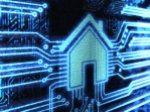 The adoption of wireless technologies for connectivity has shaken up the home automation market unleashing a number of trends:
The adoption of wireless technologies for connectivity has shaken up the home automation market unleashing a number of trends:
The race to own the gateway. Home automation devices connect to the Internet through a gateway in the home. A standalone hub, cable set-top boxes, xDSL routers, a tablet may all serve as potential gateways. Established and startup companies are in fierce competition to own the gateway: Insteon (Microsoft), Nexia, Revolv (Google), SmartThings (Samsung), VeraLite, Wink (GE) are a few examples. The gateway owner furthers the chances of its technology platform, increases hold on the user and potentially gains access to a wealth of information on user behavior to derive additional revenues.
Proliferation of technologies. There are many wireless technologies used in home automation including Bluetooth, Wi-Fi, ZigBee, Z-Wave, and proprietary protocols. Technology is related to weighing tradeoffs against application requirements which define parameters such as range, power consumption, reliability, data rate, security, and addressing. Home automation companies are forming alliances and forums to ensure interoperability, improve user experience, and expand market power. This has led to clustering of large industry players jockeying for supremacy in different camps.
Building intelligence. Data science and machine learning techniques could be applied to user data to derive information, such as predicative behavior, leading to differentiated services and new revenues. This multifaceted issue remains nebulous at this stage as it has implications on consumer privacy that many regulators are grappling with.
Heightened competition. Do-It-Yourself (DIY) kits and luxury installations are creating competition across previously separated home automation segments. In parallel Cloud-based services and general-purpose controllers are driving market growth.
Scramble for security. Connectivity of home automation systems to the Cloud expanded the risk of attack and the compromise of privacy. Consequently, solution providers are jockeying to address security and privacy flaws.
Reliance on the Cloud. The Cloud can be used for storage, compute and networking which serves to reduce the cost of user devices and ease the introduction of new services. Leveraging the Cloud requires a framework for management, storage and backup, development of SaaS model, and interface with private and public service providers. Integration of Cloud services is changing the way peripheral devices are built as functions are moved to the Cloud leaving questions on interoperability.
Alliances & partnerships. As industry players converge on this market from different vantage points, they are forming alliances and partnerships to better capitalize on the opportunity, not to mention a heightened phase of M&A activities.
Emergence of application layer standards. The fragmented and siloed nature of home automation applications led to the emergence of application layer standards to allow multiple devices based on different technologies to interoperate and share data in a manner useful to the end user. This is exhibited by efforts undertaken by organizations such as the AllSeen Alliance and Open Interconnect Consortium.
New business models. The extension of capabilities brought about by connectivity and interworking of devices and between devices and the Cloud, is opening new avenues to price services and leading to new alliances. An example is the partnership between thermostat vendors and energy companies to offer rebates on new thermostat for users who exchange power consumption data with the power company.
Additionally, opportunities are brewing for residential IoT partnerships. For example, Pebble, a wearable company focusing on watches, has apps to control the Philips Hue lighting system and the Wink home automation system[1]. Even automotive companies such as Daimler are partnering with Nest Labs[2] – their proof of concept to connect a Mercedes-Benz to a Nest thermostat provides an M2M connection of two consumer products.
The rapid changes in the home automation landscape is forcing companies to change their strategies to adapt to new realities through overhaul of product lines, establishing new partnerships, investing in new markets or making acquisitions, and developing new go-to-market strategies. After Belkin acquired Zensi in 2010[3], Belkin launch their WeMo home automation system two years later at CES, to increase its relevance to consumers, taking the silo/gateway approach.
* This is the third part of a multipart article. This is a link for the full article.
[1] How to Control Your Smarthome with Your Pebble Smartwatch
[2] Mercedes-Benz at the 2014 Consumer Electronics Show: The Future Starts Now
[3] MIT Technology Review. ‘Home Sensor Startup Snapped Up, April, 2010.